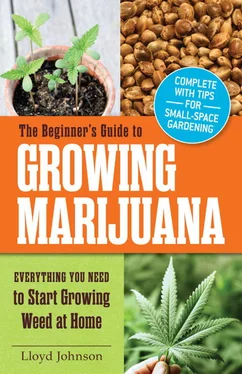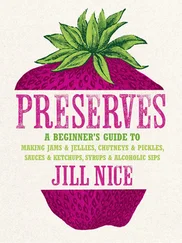Check your seeds twice a day, but avoid handling them excessively. You are looking for germination, but also stay on top of moisture requirements. Do not let the seeds dry out; this almost always kills the seed embryo. If you are using the small bowl method, a chopstick is useful for gently turning or separating seeds from each other so you can look for the tiny white tail. As soon as a seed tails, note the date in your book. This is part of the history of this particular plant.
Preparing to Plant
While you are waiting for your seeds to germinate, you can prepare your first little seedling pots. You will need 4-inch plastic pots, new and clean, or previously used ones carefully washed with a light bleach solution and then rinsed with clean water. These can be set up on trays and ready to label. An indelible pen can be used to write directly onto the pots, or some growers use a garden center plastic stick for the information and just move the stick with the plant as it gets transplanted to bigger containers.
Seed planting will go easier if you have a clear, clean, well-lighted work area, and you assemble your materials ahead of time. Germinated seeds are fragile, so plan your time so you can work without hurrying.
The soil mix for seedlings should be light, clump free, and well drained. Seeds need moisture, but excessive soil wetness can lead to a condition called damping off, where the little taproot becomes infected with a fungus parasite and rots. Once this happens, you lose the seedling. To prevent this from happening, start with sterilized soil, avoid heavy watering, and provide adequate ventilation.
As soon as the little seed tails, it needs to be planted. Do not wait; this is why you are checking the seeds at least twice a day. Leaving a germinated seed floating in water will kill it, and you will have wasted your time and your seed.
Planting the Seed
You will need:
• Sterilized potting soil
• Clean 4-inch pots
• A chopstick or pencil, marked ½-inch from tip
• A clean mister bottle with clean water
• Sharpie or other indelible pen
Use a chopstick or pencil that you have measured off and marked a half-inch above the tip for making a “drill” (as a seed hole is known). Make sure the potting soil is uniformly damp (if the soil is dry when you fill your pots, give it a good soak, stir with the ever-useful chopstick to make certain there are no dry spots, soak again, and let drain). Make a half-inch drill in the soil at the center of each pot, and you are ready to plant some seeds.
Using your thumb and forefinger, very gently grasp the seed at the opposite end from its tail. Place the seed in the mouth of the drill, tail down. This is the taproot, so heading the right direction is helpful to the seedling. Seeds that are planted upside down will eventually find their way and turn, but it takes time and is less than ideal for the plant.
Once the seed is in the drill, gently cover it with damp potting soil, and water the drill lightly with a teaspoonful of clean water. Note the planting date in your grow book.
Where to Put the Pots
Place your trays of pots in a warm, humid environment, 67ºF–78ºF, and keep moist but not soaking wet. A mister bottle with clean water is the best way to add moisture to your seedling pots. If you are starting plants or planning on growing indoors, use horticultural lights or a south-facing, well-lighted window bay. At this point, a small fan will provide adequate air circulation for the seed trays; the gently moving air will help prevent damping off.
Use a thermometer to make certain that the germinating area is truly warm (67ºF–78ºF). Trying to germinate seed if it’s too cold is a complete waste of seed and time. Now you will wait for your little seedlings to ideally push vigorously from the soil; this should occur within a day or so, but be patient. Do not overwater, as this can drown your little start; just keep the soil lightly moist by using your mister bottle.
Outdoor growers frequently start indoors under lights and transfer the seedlings after the last frost date for their area. The transfer from indoors to outdoors will require a short period of hardening off in a cold frame to minimize shock in young seedlings or clones.
Making a Cold Frame
Make a cold frame by placing an old window on top of a low cinderblock square. Three to four cinderblocks in height is sufficient. The window is easily propped for ventilation during warm days. To avoid chilling the plants, always have the open side opposite prevailing winds. Close the window on cold days, and at night cover with a blanket or some other type of insulation.
There are also some excellent and inexpensive heavy plastic greenhouses now available. An 8' × 8' greenhouse can be acquired for under $200, including some pea gravel for the floor. Most have different zippered windows that can be adjusted for ventilation. These work very well for the hardening-off phase.
And, of course, if you are starting out with a small experiment in growing and do not want to make cold frames or buy greenhouses, it is perfectly viable to wait until all danger of frost is past. Then germinate your seeds, plant in the starter pots, keep them moist, and set them in a secured area outside to pop up and start growing.
CHAPTER 4
The Soil/Growing Mediums
If you’re a first-time grower, you may ask: “Why not just use premade potting soils and be done with it?” This is an option, albeit a rather expensive one if you are growing more than a few plants on your deck. Raising healthy plants of any kind requires the grower to provide nutrients and to activate the microbial life in the soil. This is what feeds the plants.
What Is the Best Soil Mix for Cannabis?
Think about the nature of cannabis and what the plant needs for optimum growth and flowering. The final goal for the cannabis grower is large, healthy plants with large, healthy, resin-covered flowers. Without the proper soil mix and proper feeding during the grow, your plants could end up stunted, unproductive, and with inferior flowers.
Once your little seedlings are aboveground, they are in a phase of vegetative growth. The plant is building healthy roots, making green leaves, and growing in size and height. The right mix at this time will make the difference between stunted, starved little plants and large, luscious, green, and happy plants. You need large roots to support a large superstructure.
Cannabis is a big feeder and fast grower. Many a novice grower has been astonished by transplanting off schedule or late and finding the container completely filled with a dense root ball. This is also why container growers must top feed on schedule: A plant in the ground can reach out and search for more food, but the container-bound plant depends on you to feed it.
The basic requirement of cannabis is for nutrient-rich, well-drained soil. A good starter mix is one-third sandy loam for drainage, one-third compost you have made, and one-third organic bagged soil.
Using sandy loam is important not only for the drainage but also for a slightly firmer soil texture; cannabis is less than happy with the typical fluffy structure of many commercial bagged potting soils. Sandy loam can be purchased in bulk at garden centers and by the yard at “feed and fuels” in rural areas.
Keep It Simple
You could just start out with an organic bagged soil, like FoxFarm Ocean Forest Potting Soil, as it contains sandy loam already and is an excellent mix for cannabis. It is very expensive, but it’s the easiest way to go.
Читать дальше












